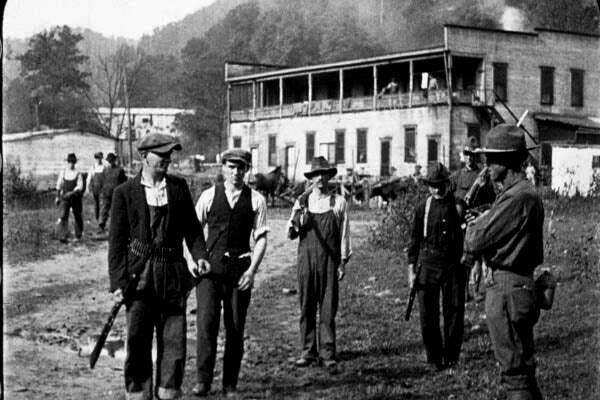The Bridge #120
in which (all) labor is honored
Hello
& Welcome ! The Bridge is a newsletter connecting the professional and the personal creatively across cultures and a diversity of topics, until we are not only full of ideas but also ready to take action. Thanks for joining in the conversation.
Sometimes I feel the current economic system cares most for the labor of business owners (over other forms of labor). While it’s a sign of leadership that successful business owners make decisions, employ others, and take risks — all worth honoring in its own right — it’s also true that the labor of “less-paid” or even unpaid workers needs recognition too. And I want to shine some light on that today.
Something to Consider
In France during the month of May there are four holidays (compared to the US there’s only one). I want to highlight the history of two of these holidays, because their origins have been a bit obscured by commercialization.
May Day (the first of May) is also International Worker’s Day (or Labor Day) in France. The US government decided (in 1894) to move Labor Day to September, as a way to weaken socialist organizing in America. But the origins of International Worker’s Day can be traced to the Haymarket Affair in Chicago (which has a complicated history but was basically a labor protest in 1886 that catalyzed a lot of energy around fair ways to organize and govern in America) inspiring American labor organizers to meet with others in Paris and suggest May 1st as a commemorative holiday. The protests of the Haymarket Affair were related to an 8-hour workday, which was eventually passed into law thanks to dedicated campaigning over decades. Thanks to the commitment of these labor organizers, we have the Labor Day holiday and a legally mandated 8-hour workday. Just imagine what future generations could gain, from committed organizing work today! Change can happen.
The other holiday I want to highlight is Mother’s Day (celebrated on the second Sunday in May in the US, but on the fourth Sunday in May for French citizens). Anna Jarvis is a woman who grew up in Philadelphia (near where I grew up), and her own mother was a teacher and community organizer who helped bring peace and improve health conditions in the areas where she lived. Anna Jarvis then wanted to honor her mother and all mothers via a public holiday, which became official in 1914. Unfortunately, holiday card companies commercialized the celebration to such an extent, it drove Jarvis literally crazy, and she ended up in an asylum for the “insane” — which is a pretty sad scenario, when we realize what happened. It doesn’t stop us today though from celebrating in the true spirit of the holiday, honoring mothers for their activism and dynamism caring for others. Especially because it’s unpaid, mothering work deserves special honor and recognition.
The events that inspired May Day also inspired two women to become activists in a “motherly” way (though neither one ever had biological children). Maybe in future we’ll be able to talk more about “activist fathers,” but for now… here are two important women to celebrate:
Mary Harris “Mother Jones” was a schoolteacher who felt so inspired by the Haymarket events, she dedicated the rest of her life (several decades) to labor organizing, once leading (for example) under-paid children working in the textile mills of Pennsylvania from Philadelphia to the President’s home in NYC as part of a three-week protest march. She also organized significantly in support of the United Mine Workers union. Emma Goldman is another activist (and writer) inspired by the Haymarket Affair, who is known to have supported anarchists and encouraged young Americans to resist the draft (in the early years of World War I) but was also a trained nurse and midwife. She also helped publish an independent news journal called Mother Earth.
Something to Read
This book was a multi-year labor of Paul Auster (recently deceased). He published it in his early 70s, and it’s no exaggeration to say he poured his heart and soul into this book. The basic premise is that the growing up of the main character Archie Ferguson is described from birth — but with three alternate universes (for a total of four stories, running in parallel). It’s not a sci-fi story, more like a historical accounting of what it was like growing up in the 50s and 60s, but with the energy of youth and the ways life might diverge if only a few key details were different.
Along with all the other things that can happen while we’re growing up, Archie Ferguson falls in love with a girl (many different girls, but especially one in particular) — and in one version of his life, as it’s imagined, that girl writes a high school paper about Emma Goldman. Thanks to Paul Auster for drawing my attention there.
Something to Listen to
“Mother Jones’ Will” by Nimrod Workman
Nimrod Workman died at the age of 99 years old. Before that, he lived and worked as an Appalachian coal miner, a union organizer, and then once retired he became a singer and song-writer. You can learn more about his life via this short documentary or — maybe you already knew about his work?
Thanks to Anna Sale for drawing my attention to Nimrod Workman’s unique offering to the American heritage. Here in this song he recognizes Mother Jones:
Well I’m goin’ to that Hart’s Creek Mountain, /
Goin’ back to old Blair Mountain Hill /
I’m going to fight for the union /
’cause I know it’s Mother Jones’ will /
Yes, I know it’s Mother Jones’ will /
Something to Practice
Consider manual labor. Could it be that in the future we would value it equally (to knowledge work / office work) in prestige and pay ?
Consider what it might look like for fathers to organize one another in solidarity. Would the world look better than it does now if more of that sort of organizing were to happen?
Ideas to ponder,
Here on my own,
Held in collectivity,
JPC 😎



